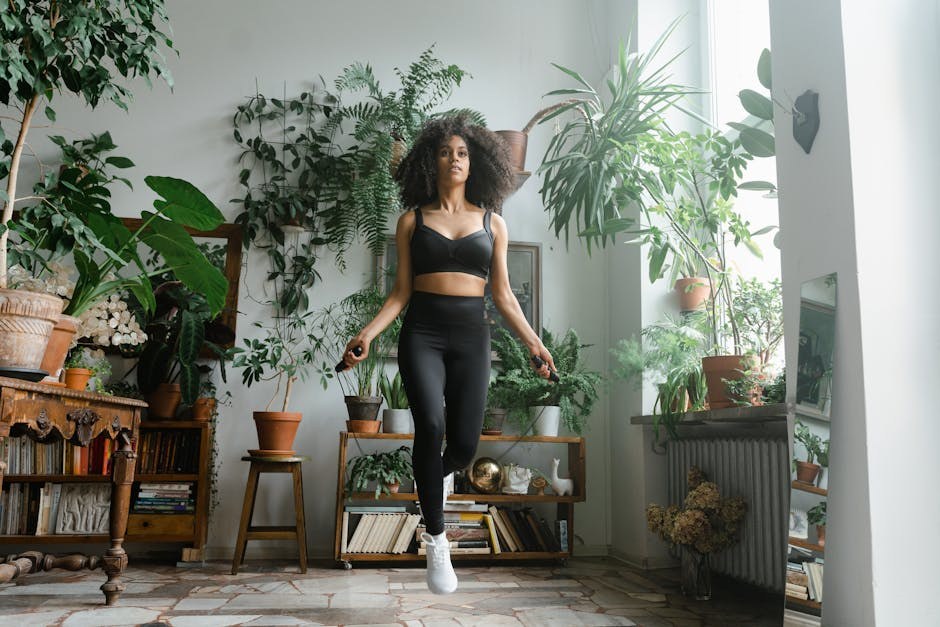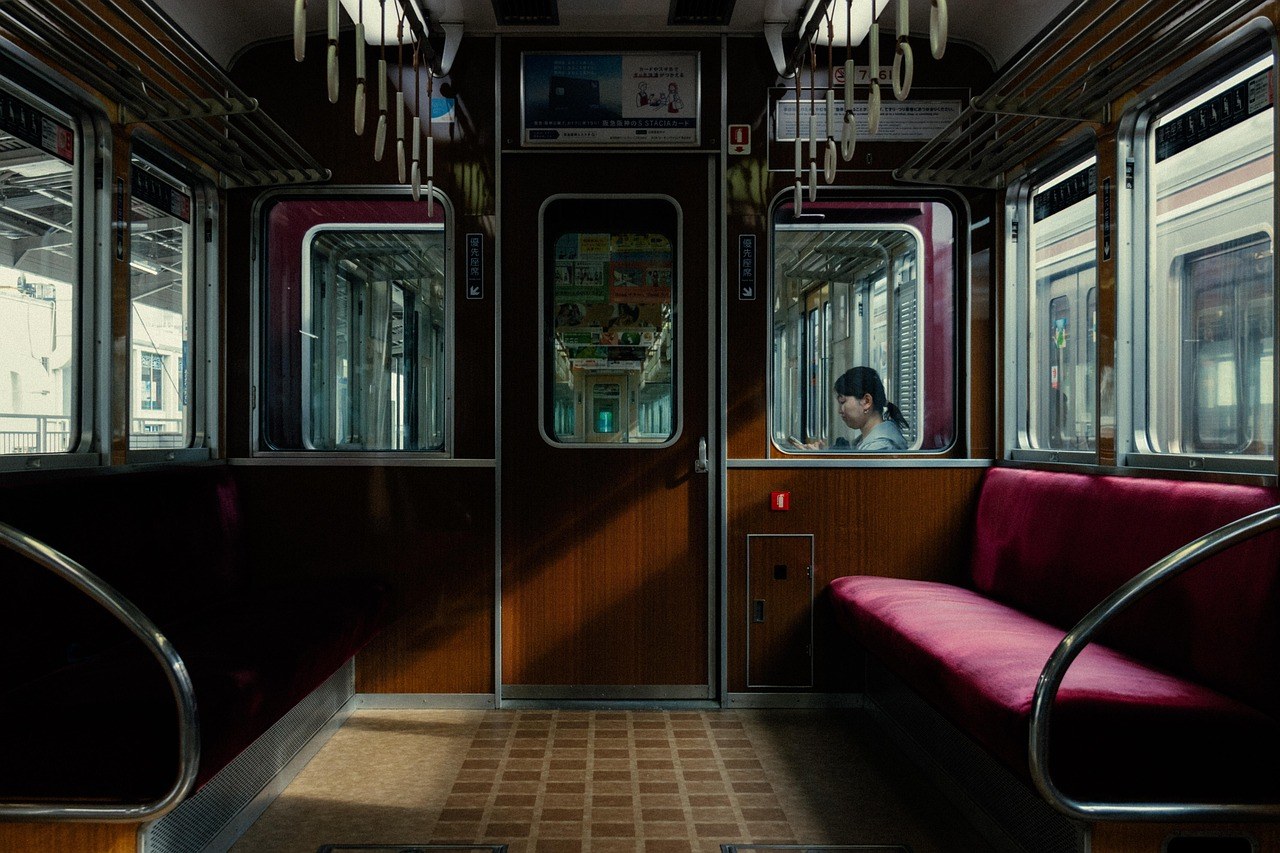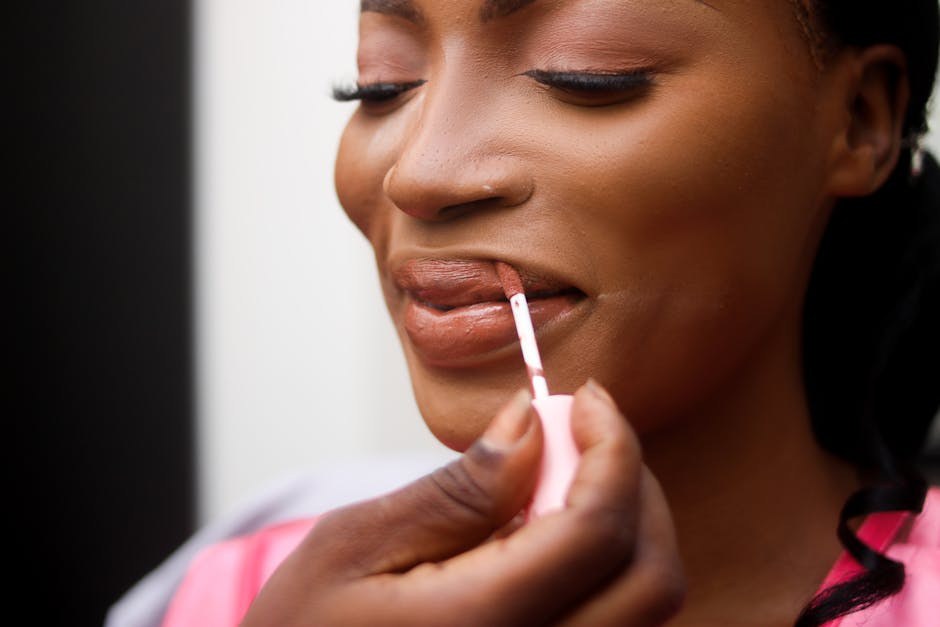Words may stumble, but the eyes rarely improvise – and that is why eye contact can feel like a conversation all by itself. If you’ve ever wondered what a guy is really saying when he looks over and lingers, this guide reframes the silent dialogue so you can read it with more ease and respond without second-guessing yourself. We’ll explore how eye contact functions in flirting, how context shapes meaning, and which small cues help you tell a warm spark from a misplaced stare.
Why the Eyes Matter More Than You Think
Human connection often starts before the first hello. Eye contact is the simplest bridge between strangers, friends, and potential partners, because it compresses attention, interest, and feeling into one shared moment. You don’t need to memorize a script – you only need to notice how the look appears, how long it stays, and what travels with it. A quick flicker is one message; a steady gaze paired with a soft smile is another. The same basic rule keeps returning: eye contact is never isolated. It is attached to time, place, and body language, and those pieces complete the sentence.
Think about how you feel when someone truly listens. Their posture opens. Their face relaxes. Their eyes hold. That same fullness shows up during flirting, and eye contact becomes the shorthand for “I’m here with you.” When a guy uses eye contact well, you sense steadiness rather than pressure – a presence that invites you in rather than pins you down.

Context Is the Quiet Co-Author
Eye contact on a noisy dance floor carries a different weight than eye contact across a library table. Time of day matters, proximity matters, and so does whatever you were doing just before the moment started. In a casual social setting, frequent eye contact may simply coordinate conversation; during a first date, the same pattern can feel like a deliberate sign of focus. Always anchor the meaning to the scene – eye contact is the headline, but the room writes the supporting paragraph.
Another quiet factor is rhythm. A guy who makes eye contact, glances away to think, then returns to you shows a two-step of attention and reflection. That rhythm is very different from a locked, unblinking stare that never softens. When the rhythm feels human – a look, a breath, a smile – you’re likely seeing interest rather than performance.
The Many Faces of a Look
Not all gazes are created equal. Below are common patterns you might notice, paired with what they often suggest when taken together with tone, posture, and setting. Treat each one as a possibility rather than a verdict – eye contact is a clue, not a confession.

-
The Lingering Glance That Stays Just Long Enough
When his eyes hold yours for a beat beyond casual, he’s marking the moment. That pause says, “I see you,” without demanding anything back. In a social setting, this kind of eye contact typically signals curiosity edging toward attraction. If he pairs it with relaxed shoulders and a small exhale, he’s probably comfortable watching the moment unfold rather than forcing it.
-
The Soft Romantic Look
There is a gentle version of eye contact that feels like dimming the room’s noise. It lands with warmth, not with intensity. The gaze lingers, then loosens, then returns – a tide instead of a stare. Add a half-smile and an open stance, and you’re reading affection that’s trying not to startle you. This is the classic early-date signal where connection grows without a single flashy move.
-
The Deeper “I’m With You” Focus
Sometimes the gaze shifts from flirtation to genuine engagement. He listens while you talk, then uses eye contact to hold the thread of your story. The energy feels grounded. This often shows up when you share something meaningful and he wants you to feel heard. The message is less “I like you” and more “I’m here” – which, in many cases, is the most attractive message of all.

-
The Overstay That Tips Into Awkward
Every warm look has a threshold. When eye contact becomes a fixed beam – no blink, no breath, no softening – it can start to feel like pressure. If the rest of his body freezes too, the signal moves from attentive to overbearing. That doesn’t automatically mean bad intent; it may simply be nerves. Still, your comfort sets the rulebook. If it feels like too much, it is too much for you.
-
The Misread Moment
Not every meeting of eyes carries subtext. Sometimes you align with someone’s line of sight purely by accident. The brain loves patterns, and it’s easy to weave a story around a coincidence. If the eye contact doesn’t repeat or travel with other cues, grant yourself permission to let it go – not every glance is a message waiting for you.
-
The Quick Flicker
A fast look that lands and leaves can be a polite nod or a spark testing the air. Watch for repetition. If he keeps returning to you with the same small flicker of eye contact, curiosity is likely. If it happens once and never again, it might just be social courtesy.
-
The Curious Peek Across the Room
From a distance, a guy might send a brief look to see if the channel is open. If you return the eye contact with a light smile, you’ve answered in kind – a quiet “hello” across the room. If you’re unsure, a neutral face and a glance away will keep the moment polite without inviting more.
-
The Spark That Disappears
Sometimes eye contact flares like a match and fades. That doesn’t negate the authenticity of the moment; it only tells you the energy was brief. If the interaction matters to you, create space for it to return – shift closer in the room, or let your own eye contact linger the next time you catch him looking.
-
The Shared Accident
Two people glance up at once, collide, and both look away quickly – the blooper reel of eye contact. The best response is simple: a small grin that says “no harm done.” If the moment repeats with a warmer tone, the accident may evolve into an opening.
-
The Polite Acknowledgment
In busy spaces, eye contact often functions like a nod. It organizes the flow of people and conversation. If the look lands briefly and comes with a practical purpose – passing a menu, making room, taking turns to speak – treat it as kindness, not chemistry.
-
The Shy Look-Away
A guy who’s interested yet timid may meet your eyes and immediately retreat. The retreat is the tell. Pair that with a slight smile he seems to suppress, and you’re likely seeing nerves. A gentle return of eye contact from you, plus a relaxed expression, can make the next attempt easier for him.
-
The Nervous Reset
During important conversations, people sometimes look down or aside to gather their thoughts. Here, breaking eye contact is a pressure valve rather than a dodge. If he reengages after a second, you’re watching focus rather than avoidance.
-
The True Distraction
If his gaze skims over you and keeps roaming – screens, doors, anything but your face – it may signal limited interest or divided attention. Eye contact that never anchors is like a sentence without a verb. You are allowed to preserve your energy when the connection doesn’t land.
-
The Respectful Distance
In some settings, moderating eye contact reads as courtesy. People might soften their look to avoid seeming confrontational, especially in formal or unfamiliar environments. If the conversation feels respectful and steady, reduced eye contact is not a red flag; it simply reflects the tone of the space.
-
The Captivated Focus
When enthusiasm lights up, so does attention. If you’re talking about something you love and he settles into bright, steady eye contact that syncs with nods and follow-up questions, you’re witnessing genuine interest – the kind that deepens both attraction and understanding.
-
The Heavy Stare
Intensity without warmth can feel like weather moving in. If eye contact grows rigid and you sense your shoulders tightening, trust the signal your body sends. You don’t need to decode sincerity from discomfort – your comfort is a complete answer.
Small Cues That Travel with the Gaze
Because eye contact is part of a larger constellation, it helps to watch what orbits the eyes. These elements round out the meaning without requiring you to guess.
-
Pupil Size and Brightness
People often seem brighter-eyed when they’re engaged. You may notice a glimmer that makes the eyes look lively. Rather than studying like a lab tech, just ask yourself: do his eyes look animated when he meets my gaze? If the whole face lifts with the eye contact, interest is in the mix.
-
The “I Can’t Help It” Smile
A smile that sneaks in at the corners tends to be honest. When that small curve arrives at the same time as eye contact, the feeling usually isn’t neutral. Shy people often show this smile briefly and then look away – a quick postcard from the inside.
-
Eyes That Seem to Dance
Joy is hard to hide. When someone’s excited, their eyes can seem to sparkle. If that sparkle surfaces every time your eyes meet, the eye contact is carrying delight rather than obligation.
-
The Raised Brow Question
A slight eyebrow lift paired with eye contact functions like a silent “Shall we?” It can invite conversation, a wave, or a step closer. If you want to accept, mirror the energy – a small lift back and a smile say yes without a word.
-
Posture that Faces You
Eye contact is clearer when the rest of him lines up. If his knees, chest, and feet orient your way, the gaze usually means engagement. If his body points elsewhere while his eyes dart back, the signal might be mixed – or he may simply be in motion between tasks.
-
Breath and Blink
Calm attention has a soft cadence: normal blinking, easy breathing, steady eye contact that ebbs and returns. Choppy blinking and held breath can indicate nerves. Neither is good or bad by itself; together they help you decide whether to ease in or give space.
How to Answer Without Overthinking
Once you recognize what a look suggests, the next step is choosing your reply. You don’t have to produce a perfect line – a small, congruent response is enough. Let eye contact be the doorway, not the destination.
-
If You’re Interested
Return the eye contact for a second, then let a gentle smile bloom. Open your posture – shoulders easy, chin level. If conversation is possible, ask a simple question about the present moment: “How are you finding the event?” You’re not auditioning; you’re extending the thread he offered.
-
If You’re Curious but Unsure
Meet his eyes briefly, then look away and take another look later. This pattern communicates openness without a promise. If he maintains comfortable eye contact and steps closer with respect, the interest is likely mutual. If not, you can gracefully let the moment pass.
-
If You Feel Uncomfortable
Release the need to decode. Reduce eye contact, turn your body slightly, and engage elsewhere. If needed, a firm, neutral look that breaks quickly says no, thank you more clearly than any monologue. Your boundaries do not require justification.
-
If You’re Shy and Intrigued
Try short, repeatable steps. Offer small bursts of eye contact, then a smile, then a comment about the setting. Familiar objects – the playlist, the artwork, the coffee – make easy bridges. Each tiny success builds comfort for the next exchange.
-
If You Prefer Friendship
Keep eye contact light, add a friendly nod, and widen the circle to include others. Group conversation resets the signal from romantic to communal. Your tone and topics can reinforce that frame without dampening kindness.
-
If You’re Not Interested
A brief, polite smile followed by reduced eye contact communicates more cleanly than excuses. Focus your attention on another task or conversation. Most people understand and mirror your cue.
-
If You Want to Flirt Playfully
Use rhythm. Offer eye contact, let it linger, glance away with a grin, then return. That simple pattern creates a light chase without games. If he matches your timing, you’ve found common ground.
-
If the Moment Catches You Off Guard
Pause. Breathe. Then choose any gentle response that fits – a surprised smile, a small wave, a “hey.” Eye contact doesn’t demand cleverness; it rewards presence.
-
If It Was a Mix-Up
When you realize the look wasn’t meant for you, a quick grin dissolves the awkwardness. Redirect your eye contact to what you were doing and move on kindly.
-
If You Want to Radiate Confidence
Stand or sit tall, let your shoulders drop, and allow a steady few seconds of eye contact when you speak. Confidence is quiet consistency – your gaze, voice, and posture saying the same thing at once.
Reading the Room Without Losing Yourself
Decoding looks shouldn’t turn into self-doubt. Use this simple loop: notice, name, and choose. Notice the pattern of eye contact – lingering, soft, quick, or heavy. Name what the rest of the body is doing – open, fidgety, relaxed, or rigid. Choose your next step – invite, explore, slow down, or exit. The loop keeps you centered so you can enjoy the moment rather than audit it.
It also helps to remember that eye contact is a two-way signal. Your look teaches the other person how to look at you. If you reward kindness with warmth, you’ll usually receive more of it. If you set boundaries with minimal eye contact and clear posture, most people will tune their approach accordingly. The goal isn’t perfection; it’s coherence – letting your gaze and your comfort tell the same story.
Common Mix-Ups You Can Skip
One repeated tripwire is equating constant eye contact with confidence. Sometimes the steadiest gaze belongs to the most practiced flirt, not the most genuine one. Another trap is assigning too much meaning to a single moment. Treat each instance of eye contact as one frame, not the whole movie. Lastly, avoid downplaying your own read. If something feels off, you don’t owe the scene more analysis. A single clear boundary is enough.
From Signal to Step
So what do you do when you keep catching his eye? Decide what you want the moment to become. If you’d like to meet him, guide the scene with a small invitation: match his eye contact, smile, and offer a simple opener tied to right now – “Is this your first time here?” If you want to make his job easier, close the physical distance a little so conversation feels natural. If you’d rather opt out, keep your attention elsewhere and let your minimal eye contact do the talking.
Flirting can feel risky because it puts two vulnerable truths on the table: I’m interested, and I don’t know what will happen. Eye contact is a kind way to navigate that risk – it lets curiosity breathe without demanding an instant answer. When a guy sends you that message, you can meet it, test it, or dismiss it, all with a look of your own.
Choose the Path That Fits You
Here’s a simple way to translate everything into action. If his eye contact is warm, rhythmic, and paired with open posture, return it and see where the thread leads. If it’s jumpy but kind, pace the moment gently – small talk, soft smiles, shorter looks. If it’s rigid or intrusive, reduce eye contact and move on. In every case, let your comfort set the tempo.
When the silent conversation feels promising, it’s perfectly fine to be direct. A straightforward “Want to grab a coffee?” cuts through the haze and gives both of you a clear path. Directness doesn’t cheapen the magic; it protects it. You’re not trying to solve a puzzle – you’re giving a nice moment a fair chance to become something more.
A Final Word – Without the Guesswork
Across situations, the through-line holds: genuine attention looks and feels human. Real interest breathes; it doesn’t glare. If a guy keeps offering warm eye contact and your body answers with ease, you have enough information to take a step. If not, you have enough clarity to step away. Either way, your gaze is not only a receiver – it is also a compass pointing toward the experience you want.
Let that be your guide the next time a look finds you. Choose the response that protects your peace, honors your curiosity, and leaves room for surprise. Eye contact will carry the rest – and when it’s right, you’ll know because the whole moment will feel like you.